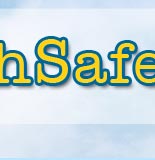 |
 |
 |
 |
 |
 |
|||||||||
Join our mailing list and receive updates about our activities. |
|
Previous Articles Published on TeachSafeSchools.org Child Anxiety: Signs and Symptoms of Problematic Reactions By Wendy K. Silverman, Ph.D., ABPP All children have anxiety reactions. Transient or temporary child anxiety reactions are expected and cause relatively little interference in functioning for the average child. Transient child anxiety reactions tend to be associated with new or unexpected events (e.g., the first day of school). Most importantly, transient child anxiety reactions can be handled with minimal reassurance or encouragement. Some children show anxiety reactions that are more than transient or temporary. Some children may begin showing signs and symptoms of anxiety disorders. Anxiety disorders are one of the most common disorders in young people. The most important signs to look for relate to interference or impairment in functioning. That is, are the childís anxiety reactions beginning to interfere with functioning in the areas that are most critical for children? These include the areas of peer relationships, academics, family relationships, and the childís feeling excessive internal, subjective distress. If interference or impairment is evident, it is possible that the childrenís reactions are more than just transient. They may be suggestive of a clinical anxiety disorder. There are different types of anxiety disorders that children can experience. The most common anxiety disorders of childhood are: separation anxiety disorder, generalized anxiety disorder, social anxiety disorder, and specific phobias. Other anxiety disorders that children can experience are: obsessive-compulsive disorder, post-traumatic stress disorders, and panic disorder. Generally, all anxiety disorders are characterized by excessive avoidant behaviors, negative or distorted thoughts usually about harm or catastrophic events occurring to the child or loved ones, and upsetting bodily reactions such as stomachaches and headaches. For example, a child with separation anxiety problems may avoid the parent separating from him or her; may worry if the parent does leave, the parent may never return; and may complain of severe stomach pains when parent does leave. There are over 25 randomized clinical trials showing that problematic childhood anxiety reactions can be reduced effectively by having the child gradually face the situations or events that provoke anxiety (i.e., ìexposureî) coupled with the use of cognitive and behavioral treatment procedures. Exposures can be done either ìliveî (or in vivo) or imaginally. Exposure based cognitive behavioral therapy is effective whether delivered in an individual, group, or parent-child format. In light of the evidence that problematic childhood anxiety can be effectively reduced using exposure and cognitive behavioral therapy, children no longer need to be silent sufferers. The key is for school counselors, teachers, and parents to recognize the signs and symptoms of problematic childhood anxiety reactions and make appropriate referrals for this type of evidence based treatment approach.
Resources:
RtI and Violence Prevention: By Jim Larson, Ph.D., Response to Intervention (RtI) is defined as "the practice of providing high-quality instruction and interventions matched to student need, monitoring progress frequently to make decisions about changes in instruction or goals, and applying child response data to important educational decisions" (Batsche et al., 2006). Recent revisions to federal Individuals with Disabilities Education Act (IDEA) guidelines have provided legal incentives for school personnel to approach the diagnosis and treatment of learning disabilities through the RtI model. This approach employs successively more intense instructional interventions in place of the time-worn "test and place" procedures that have resulted in skyrocketing numbers of special education placements. Under RtI, before a decision about special education placement is made, struggling students are provided research-supported academic instruction in the general education classroom (Tier I -- All Students) and additional small group instructional opportunities until academic gains are realized (Tier II -- Some Students). If sufficient gains are not forthcoming, a decision is made to try a more intense, one-on-one approach (Tier III-Few Students). When school personnel use RtI, they explore the possible responses to a child's academic difficulties along the full continuum of research-supported instructional possibilities until the most effective and least restrictive intervention is determined. The programming implications of RtI for school violence prevention are significant. An old Chinese saying counsels that "a man should not kill a fly on his friend's forehead with a hatchet." Sound advice, indeed. Yet is this admonition against overreaction routinely ignored when it comes to school violence prevention? The most frequent response to any form of serious student aggression in school is out-of-school suspension. But simply suspending or expelling young people who display anger-fueled aggression is not "providing high quality instruction and interventions matched to student need" but rather merely pushing the problem down the road where it will surely worsen in both frequency and intensity. A student fight or some other form of angry interpersonal aggression may deservedly trigger an aversive disciplinary consequence, but it should also trigger a more complex educational question: "What does this student need to know and be able to do to in order to be successful in this school setting?" Too often, that difficult question is ignored in service to simple overreaction. The commonly employed "punish and hope" response to bullying, fighting, and aggressive anger outbursts in the school building is one that needs to be replaced with a strategy rooted in sound educational practices. A child who has difficulty controlling anger is a child with an educational need in much the same way as is a child who has difficulty learning to read. Both needs, left unaddressed, are significant risk factors for serious problem behaviors down the road. Employing a Response to Intervention approach to address aggressive problem behavior might take the following form:
Tier I (For all students, including the student in question):
Tier II (For the student in question and other students with similar needs):
Tier III (For the student in question alone):
Resources:
References: Batsche, G., Elliott, J., Graden, J.L., Grimes, J., Kovaleski, J.F., Prasse, D., et al. (2006). Response to Intervention: Policy considerations and implementation. Alexandria, VA: National Association of State Directors of Special Education. Miller, W. R., & Rollnick, S. (2002). Motivational interviewing: Preparing people for change (2nd. Ed.). New York: Guilford Press. DOING THE RIGHT THING: CHANGING THE "CULTURE OF BULLYING" EDC Update
ìBullying can be prevented,î says EDC Senior Scientist Ron Slaby, Ph.D., an international leader in youth violence prevention. He co-developed the Eyes on Bullying program, funded by the IBM Global Work/Life Fund, to help prepare caregivers and their children to stop bullying before it harms or kills. He also serves as an expert advisor to the Anti-Bullying Campaign, recently launched by the Turner Broadcasting Systemís Cartoon Network and CNN Worldwide. Why do children bully? Bullying is learned ñ by observing others who bully, by viewing and interacting with violent media, or by directly experiencing bullying. Children who bully have sadly learned to hurt others who are vulnerable, and they do so intentionally and repeatedly. They carefully select and coercively control their victims ñ often making them think they only have two options: ìChallenge me and Iíll hurt youî or ìAccept my abuse and prove youíre a loser.î How do bullied children respond? When children who are bullied come to believe they have only two optionsócounter-attack or submit ñ they feel helpless, frightened, and trapped. Many withdraw and become depressed. When bullying has been allowed to escalate with no help in sight, we have seen far too many tragic cases of victims either taking violent revenge through school shootings or taking their own livens in despair. Bullying is based on an imbalance of power. But when bullied children get help and come to realize that they do have assertive and nonviolent ways to deal with bullyingóand when bystanders speak out against bullying to support a victimóthe power dynamic changes and bullying is no longer possible. What role do peer and adult bystanders play? Ever since we first introduced the bystander role into the field of bullying prevention 21 years ago, our appreciation of the importance of bystanders has continued to grow. In some sense, we are all bystanders to bullyingóeither directly or indirectlyówith opportunities to help stop or prevent it. Too often direct bystanders contribute to bullying by passively accepting it, actively encouraging it, or even joining in. Too often indirect bystanders overlook warning signs, fail to take reports of bullying seriously, or perpetuate the cycle of violence by telling the victim to ëbeat up the bully.í Yet, bystanders can and often do play a critical role in stopping bullying by standing up for the victim in the moment, reporting bullying incidents, and showing compassion. Bullying prevention programs, such as our Eyes on Bullying and our Aggressors, Victims, and Bystanders programs, provide effective activities and strategies that challenge adults and children to recognize and respond to bullying in its earliest and most preventable phases. Participants learn and practice effective ways to stand up, speak out, and support others from being bullied. What role do state anti-bullying laws play? The new anti-bullying legislation in Massachusetts is raising important questions about the roles and responsibilities of adults. School officials everywhere are becoming more concerned with their new responsibilities, as well as the liabilities they may face if they donít act effectively to prevent bullying in their schools. Mandating bullying prevention programs and policies in schools is a good start. Every school must be prepared to guarantee the full safety, dignity, and well-being of each and every student. How can we change the ìculture of bullyingî in our society? Ultimately, we must ask ourselves, as a society, how will we stand up and stop bullying? How will we prepare ourselves and our children to use our power compassionately ñ to support, protect, and empower those who are vulnerable ñ rather than to use power abusively to harm those who are less powerful? The way we answer these questions is a critical test of our times. Visit www.eyesonbullying.org or www.thtm.org/special.htm or contact Ron Slaby: rslaby@edc.org. CULTURALLY EFFECTIVE VIOLENCE PREVENTION
Efforts at violence prevention in the United States confront a number of difficulties. These difficulties include the pervasiveness of violence in the media including films, television, video games, music and news. In addition, easy access to guns and drugs facilitates domestic, school, workplace, and community violence. In some of our urban neighborhoods, the majority of children have personally witnessed one or more shootings. Although pervasive, there is considerable variation in exposure to violence and experience of violence by age, race, ethnicity, gender, income, and geography (Brown, Cohen, Johnson, & Salzinger, 1998; Guerra & Smith, 2006; McCord, 1997). This variation leads many to think of violence in categories often defined by race, ethnicity, and gender. Likewise, we often associate culture with race and ethnicity. However, the variations within racial and ethnic groups exceed the differences among them. More useful and accurate definitions of culture are based on shared meanings (see, e.g., www.changingminds.org/explanations/culture/what_is_culture.htm). Shared meanings are developed through shared history and activities. People with common experiences, who live, work, and communicate with each other develop a shared view of the world (culture), expressed through their language, speech patterns, music, values, and behavioral norms (Barker, 2000). Sometimes these shared meanings occur within a racial or ethnic group; often they cross racial and ethnic boundaries, e.g., in youth culture, where youth in much of the world share common meanings expressed in dress, music, videos, websites, etc. Today youth, as well as adults, can use social networking websites to develop their shared meanings without even having face-to-face contact. Before undertaking any violence prevention efforts, it is necessary to understand the nature of the culture and develop a trusting shared relationship with the participants. Consideration of culture is essential for effective violence prevention programs because programs effective in one culture (often the culture in which they were developed) may be ineffective or even harmful in another. The concept of culture as shared meaning has important implications for programs, including violence prevention. The first implication is that it is essential to know the shared meanings of participants in the program. To know the shared meanings, it is necessary to spend the time with the participants to develop the trust and knowledge needed to form partnerships with them. True partnerships with the participants are much more likely to result in effective program development, implementation, and evaluation (e.g., Mohatt et al., 2004). Knowledge of the history, values, communication patterns, age and gender roles, and behavioral norms allow us to understand the context of violence, i.e., to see the multiple influences that result in violence and the shared meaning of violence within the culture. These meanings are typically manifested in the everyday activities and social networks of the participants. This cultural knowledge can then be used, in partnership with the participants, to operationalize the prevention program. Instead of just translating a program developed in another culture, a culturally effective program can be developed using the communication patterns, roles, and norms of the culture. With this knowledge the program can be based on the strengths of the culture. The activities influencing violence may offer multiple strength-based options to help prevent or reduce the violence that would not be apparent from a deficit violence reduction focus. Affecting the activities and social networks influencing violence is more likely to be effective and sustainable. Some of these principles are advocated by the American Psychological Association in Guidelines on Multicultural Education, Training, Research, Practice, and Organizational Change for Psychologists ( www.apa.org/pi/multiculturalguidelines/homepage.html). In addition, guidelines for working with marginalized groups have been developed (Keys, McMahon, Sanchez, London, & Abdul-Adil, 2004). An example of a violence prevention project that focuses on cultural awareness with a marginalized group is Flint Fathers and Sons. This program with non-resident fathers and their sons seeks to prevent violence, substance abuse, and early sexual relationships among 8-12 year-old African-American boys by improving communication, social skills, and cultural awareness. "Preliminary findings suggest improved communication between fathers and sons and increased healthy behaviors among the adolescents" ( http://www.cdc.gov/prc/selected-interventions/notable-work/boys-health-risks-reduced-father-son-bonds.htm ). An excellent example of a culturally effective project that illustrates the process of developing intervention based on shared meanings, in partnership with participants, is one on sobriety with Alaska natives (Mohatt, et al., 2004; also available for download: http://academic.evergreen.edu/curricular/ATPSMPA/Mohatt.doc ). Similar procedures could be used in violence prevention with any cultural group. References Barker, C. (2000). Cultural studies: Theory and practice. Thousand Oaks, CA: Sage. Brown, J., Cohen, P., Johnson, J. G., & Salzinger, S. (1998). A longitudinal analysis of risk factors for child maltreatment: Findings of a 17-year prospective study of officially recorded and self-reported child abuse and neglect. Child Abuse and Neglect, 1065-1078. Guerra, N. G. & Smith, E. P. (Eds.) (2006). Preventing youth violence in a multicultural society. Washington, DC: American Psychological Association. Keys, C. B., McMahon, S., Sanchez, B., London, L., & Abdul-Adil, J. (2004). Culturally anchored research: Quandaries, guidelines, and exemplars for community psychology. In L. A. Jason, C. B. Keys, Y. Suarez-Balcazar, R. R. Taylor, and M. I. Davis (Eds.) Participatory community research: Theories and methods in action (pp. 177-198). Washington DC: American Psychological Association. McCord, J. (1997). Placing American violence in context. In J. McCord (Ed.), Violence and childhood in the inner city (pp.78-115). Cambridge, England: Cambridge University Press. Mohatt, G. V., Hazel, K. L., Allen, J., Stachelrodt, M., Hensel, C., & Fath, R. (2004). Unheard Alaska: Culturally anchored participatory action research on sobriety with Alaska natives. American Journal of Community Psychology, 263-273. MAKING AMERICA'S SCHOOLS SAFER
We are forensic social scientists dedicated to the prevention of school and workplace violence. This presentation highlights the findings of our study of the Columbine High School massacre. In April 2002, the Threat Assessment Group, Inc., of Newport Beach, California, completed a two year project that attempted to identify the casual factors that led two disaffected teens to kill 12 students and a teacher before taking their own lives. As part of our project, we reviewed more than 17,000 pages of documentation and interviewed dozens of witnesses, friends, and teachers. (Our work was made into a documentary and broadcast on the A&E Network in a special edition of Investigative Reports.) Dylan Klebold and Eric Harris have been called "seemingly normal high school boys." The results of our study suggest otherwise. Each of them displayed ample evidence of being a deeply troubled young man, and each exhibited numerous risk factors for violence. Klebold was described by multiple observers as having shown signs of depression for years, with increasing anger during his last year of life. Harris exhibited chronic anger long before the murders, but was also described as increasingly depressed and "dark" during the months before the murders. Through the internet, television, movies, and music, Harris and Klebold subjected themselves to an extraordinary amount of violent imagery. We found that Klebold and Harris were depressed and angry, and many people knew about it. Klebold and Harris each needed help, and neither got it. Moreover, adults and/or peers learned of death threats, use of guns and explosives, violent writings, violent video productions, and descriptions of violent dreams. The school and wider community needed to be protected from Klebold and Harris, and Klebold and Harris needed help, but no effective intervention occurred. Our second important finding involved the culture at Columbine High School, where virtually everyone agreed that the ethos was, "Jocks rule." Bullying was reported by victims, bullies, and teachers. Here, too, it seems everyone knew it. Bullies were tolerated; especially those who brought state championships to Columbine. While most athletes probably never engaged in bullying, those who did apparently had little fear of the school administration. Third, we were impressed by the evidence suggesting that this event was a sick and destructive form of "performance art." Harris and Klebold were putting on a show, meant to portray a world in which they were no longer victims and their "Godlike power" was so absolute that they could arbitrarily decide who would live and who would die. The crew for their production was the national media. Harris, in the now famous "Basement Tapes," accurately predicted how his act of senseless violence would be glorified and aggrandized by television networks and the press. This confirms our hypothesis that the national print and electronic media have created a market for mass murder. Eric Harris was right: If you want to become famous and fascinating, there is no more efficient means than to commit mass murder, thanks to the way America´s media reports the news and the manner in which our public digests it. So what have we learned? We do not believe that it is possible to predict which troubled teenagers will become the next shooters. Thus, the only sensible policy is to identify and help all of the kids in trouble; not because they will become violent, but because they need help. Thus, in addition to preventing very rare acts of mass murder, schools will be able to reduce the far more common signs of troubled teens, such as pregnancy, delinquency, substance abuse, and suicide. At school, teachers, students, and staff need to report all warning signs of troubled kids, particularly bullying, harassment, and threats. This can only happen when the predictable response to these reports is protective and benevolent. Kids will not participate in a "snitch" system that only gets their friends in trouble. Rigid and punitive "zero tolerance" policies will only create an illusion of safety, by driving the most troubled teens underground. School districts should train carefully selected teams to investigate reports and respond appropriately, with judgment, experience, and concern for the well-being of all everyone involved. Parents and schools must be taught to recognize and respond to the symptoms that children are deeply troubled, especially with anger and depression, so help can be provided. School bullying must be viewed as dangerous, illegal, and unacceptable. At very early ages, students must be taught tolerance and respect, and schools must become places where students feel safe, respected, and valued. Next, parents need to monitor their children's access and exposure to the violent imagery available through the Internet, video games, movies, and television. If a child abuses a substance, possesses a weapon, or is arrested, parents need to talk to the child, search the child's room, and provide reasonable and consistent adverse consequences for unacceptable behavior. Most importantly, deeply troubled kids need competent professional help. Finally, it's time for the national media to take a long hard look in the mirror. They must realize that in their zeal to sell advertising they provide unnecessary and reckless coverage of mass murder, which contributes to causing the next mass murder. The facts can be reported in a manner that does not give others an incentive to imitate the crimes. Guilt and blame will not make America's schools safer, but responsibility might. Our findings suggest clear steps that must be taken by responsible adults, including administrators, faculty, staff, parents, producers, reporters, and editors. There will always be some angry and depressed teenagers, with too easy access to firearms and information about how to make bombs. But together, we can make our schools places that students will not want to attack; safer environments where kids – all kids feel safe and valued; places where the good kids will report their troubled friends because they care about each other and the safety of their school. Instead of aggrandizing murderers or cleaning up their messes, together we can make sure that that troubled kids get the help they need, so that they never become news at all.
For more information on this topic please contact:
Joel A. Dvoskin, Ph.D., ABPP Science and the Prevention of Violence: Where is School on a Child's Journey to Prison? It is his very first day at his large, urban public school, and he is giggly and excited! He arrives dressed in the best clothes he owns, and he lines up outside the door with his fellow five year-olds. He and the others in this wiggly line of children are about to enter a strange new world, one which will rocket many of them to the stars of achievement and success ñ many of them, but not him. He doesn't know this yet, but instead of the stars, he is about to continue a trajectory begun at home that will take him straight to prisonÖ if he is lucky enough to live that long. Children from economically privileged homes typically start school already "pre-wired" for success. They have enjoyed many home hours learning colors, numbers, letters, and most importantly, how to get along with other children and the adults in their worlds. Their economically successful parents know well that pathway to the stars. However, the often complicated and demanding lives of families from poverty make this parent-to-child training for success much more difficult and unlikely. Time is spent less on letters and colors and more on the skills required for safety and survival in the home and neighborhood. As a consequence, too many children arrive at school that first day ill-prepared behaviorally and academically for what will greet them. How the public school subsequently responds to them will in large measure determine what fate lies down that path. Research indicates the following:
Schools can be a major thoroughfare to dropout, prison, and worse, or they can be strategically and systematically responsive to the needs of the children they serve. This level of responsiveness is begun when dedicated individuals work to bring about evidence-supported change starting from the classroom level on up. The Melissa Institute is committed to support, collaboration, and partnership with these efforts. Science and the Prevention of Violence: The recent school shooting in Cleveland (October, 2007) brings to mind what experts know about the factors that seem common to such violent events. While we often learn a great deal about the perpetrators of such violence, we often fail to learn very much about what was tried (or not tried) to prevent such violent episodes. In the case of the student who did the shooting in Cleveland it has been reported that he had been suspended from school, had been bullied, had psychiatric problems, and also showed evidence of “pockets of competence.” What we don’t know is how the school responded to each of these issues. For example, it was reported that the perpetrator was suspended on two occasions. Adolescents who are suspended are at increased risk for substance abuse, criminal behavior, and school dropout. What alternatives to suspensions did the school consider? The perpetrator was reportedly bullied. What evidence-based programs did the school implement to address bullying? What specific interventions were in effect for victims of bullies as well as for the perpetrators of bullying? It was reported that the perpetrator had attempted suicide and was non-compliant with his medication. We know that approximately 70% of kids who actually attempt suicide never access follow-up care, even though they are referred to mental health. What communication efforts were implemented between the treatment staff of the psychiatric facility, the school, and the perpetratorís family? For nearly half the children with serious emotional disturbances who receive services, the public school system is the sole provider. How did the school help the perpetrator with reentry to school? How did the school help him readjust to the school routine following his suicide attempt? Was a mentor assigned? A school counselor? Was a referral made for follow-up treatment? What did the school and psychiatric facility do to engage the boy's mother as a partner in her son's treatment program? Students who enter such an elite high school are screened for academic competence in order to gain entry. What screening efforts were incorporated to screen and identify students who have mental health needs? What, if any, follow up individual educational plan was formulated and implemented with the perpetrator? What proactive steps did the school take in nurturing the sense of school connectedness for the accused? The perpetrator was competent in chess and had won a tournament in this area. How did the school use the perpetratorís special abilities in this area to engage him in socially appropriate ways? In the same way that the FAA uses a Checklist to determine the causes of an airplane accident , one wonders whether a comparable Checklist could be developed and be employed following each violent episode that occurs in schools. It would seem that we could we learn from such violent incidents thereby reducing the likelihood of violence in our schools? |

This web site has been produced by The Melissa Institute for Violence Prevention and Treatment to provide research-based school violence prevention procedures for educators. The web site has been made possible with the generous support of the Robert and Renee Belfer Foundation and other supporters. |
 |
The Melissa Institute for Violence Prevention and Treatment to provide research-based school violence prevention procedures for educators Terms and Conditions |
|